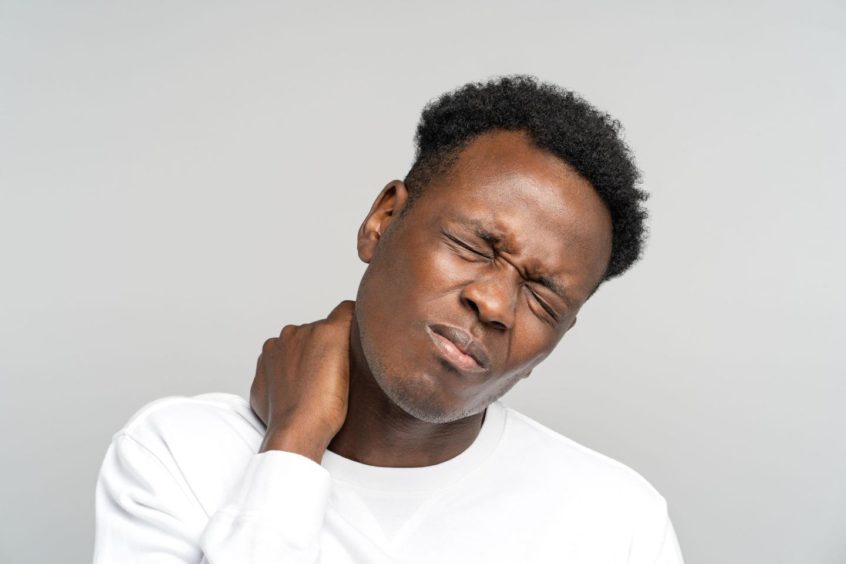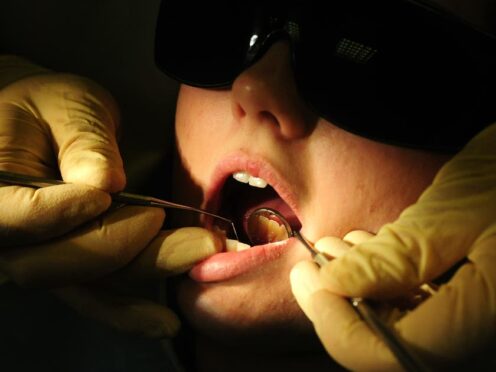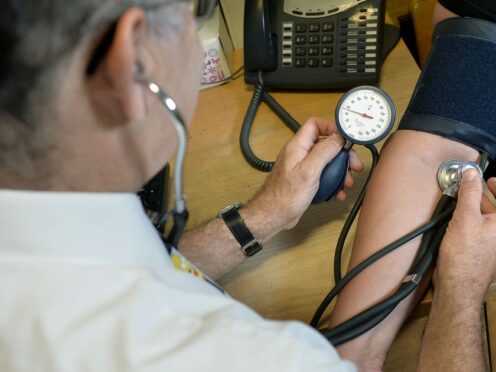Whether it’s sharp and sudden or dull and constant, pain from a trapped nerve is hard to ignore.
While pinched nerves aren’t uncommon, they can cause a major amount of discomfort, leading to sleepless nights and misery while performing even the simplest of everyday activities.
Often, the first step in getting relief from any kind of pain is identifying the source, and making sure a trapped nerve really is to blame. So if your symptoms are severe or ongoing, it’s a good idea to get them checked by a doctor or physio.
To find out more, we spoke to leading UK pain expert Dr Anthony Ordman, who founded the Royal Free Hospital’s pain management clinic in London.
What are trapped nerves and why do they occur?
Pinched or trapped nerves are thought to occur when pressure is put on an area of a nerve, causing it to send warning signals to the brain. Ordman says they can appear in many different areas of the body, as the compression is caused by surrounding tissues, such as bones, cartilage or tendons.
“The most common examples include the neck, where the pain goes over the shoulder, down the arm and sometimes into the hand, or from the lumbar spine where the pain travels down the leg – which is is what we commonly refer to as sciatica,” says Ordman.
“Other examples include pudendal nerve pain in the pelvis, which happens when the nerve is pinched by two ligaments or squashed by a bike saddle, causing intense pain in the groin.”
What are the symptoms of a trapped nerve?
Sometimes, pain might be your only symptom, although you could experience other warning signs too.
As Ordman notes: “The nerve pain itself can feel like a sensation of intense pressure or burning, and it may feel like tiny electric shocks or tingling. At the same time, you can also experience numbness in the region of the nerve, which is a strange and contradictory sensation all at once.”
The discomfort happens, Ordman says, because the nerve is being squashed, so it sends the brain a message, which it interprets as pain. There may also be a feeling of muscle weakness in the affected area.
How is nerve pain treated?
If you’re suffering with a trapped nerve, rest assured that most cases go away on their own, and often quite quickly in a couple of days. “In the case of neck and lumbar spine pain, changing your posture and visiting a good physiotherapist may be enough,” says Ordman.
Alternating between applying a heat and ice pack can help you to find relief – but make sure to wrap them in a towel before applying directly to your skin. Massage therapy, through the use of a handheld massage tool, can help to stimulate circulation in the affected area and bring soothing benefits.
“Sometimes anti-inflammatory drugs such as ibuprofen can help, but they shouldn’t be taken long term. Painkillers such as paracetamol are not particularly helpful with nerve pain,” Ordman adds.
“There are specific medicines to treat nerve pain, including gabapentin, amitriptyline and pregabalin, but these drugs will only help one person in around four, and they usually have side effects, such as sedation and memory issues or brain fog.”
You will need to speak to your doctor about these types of medicines, to ensure they are suitable and side effects are monitored. Ordman adds that pregabalin can be very addictive too, so should be prescribed in a controlled way.
“Newly available medicines, such as medical cannabis, are being increasingly turned to, and they can be very useful in treating the symptoms of nerve pain,” says Ordman.
Treatment will often depend on the severity of symptoms and their underlying cause, and more extreme measures – like surgery – are usually a last resort, when more conservative measures have not worked. “Sometimes surgery is needed to save a slipped disk, or doctors can inject steroids around the pinched nerve, but such treatments are not available to everyone,” says Ordman.
Is it ever serious or something to be concerned about?
Ordman says trapped nerve pain generally isn’t serious, but it can be. “Nerve pain can be very distressing and it can also restrict freedom of movement and sleep too.
Occasionally it can be very serious, where the nerve supply to the bladder or legs might become compressed, which could lead to problems emptying the bladder, or disfunction and weakness of the legs. In this situation, urgent surgery would be required,” he explains.
Are there any measures we can take to prevent it?
As with most health issues, self-care and living a healthy lifestyle is often key to prevention. Ordman says maintaining a good posture (such as avoiding crossing your legs for too long), incorporating strength and flexibility movements into your routine, and taking breaks from repetitive activities can all help to keep your nerves pain-free in the long run.
However, you should speak to a doctor if your pinched nerve symptoms last for several days and haven’t responded to rest and painkillers.













